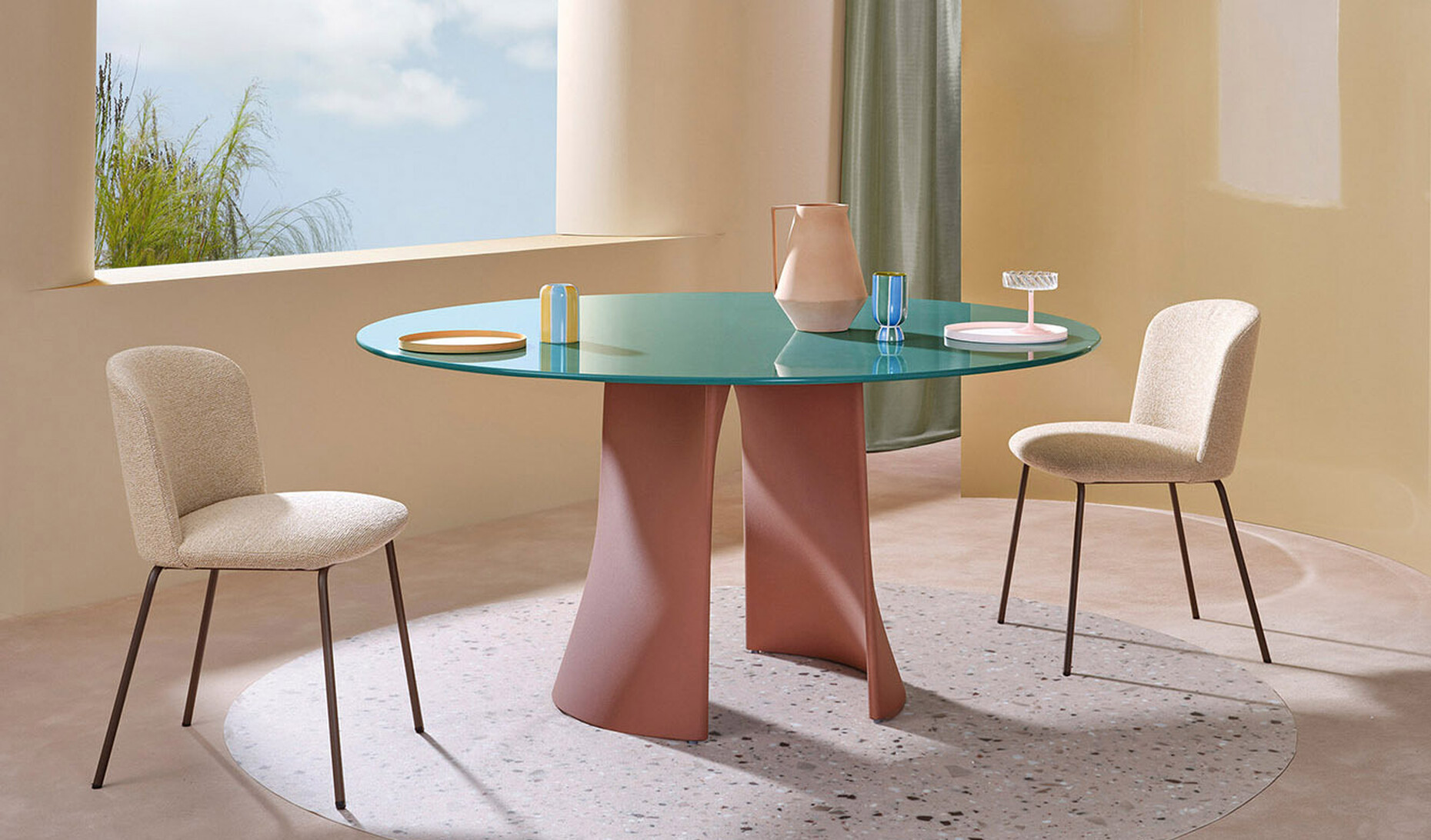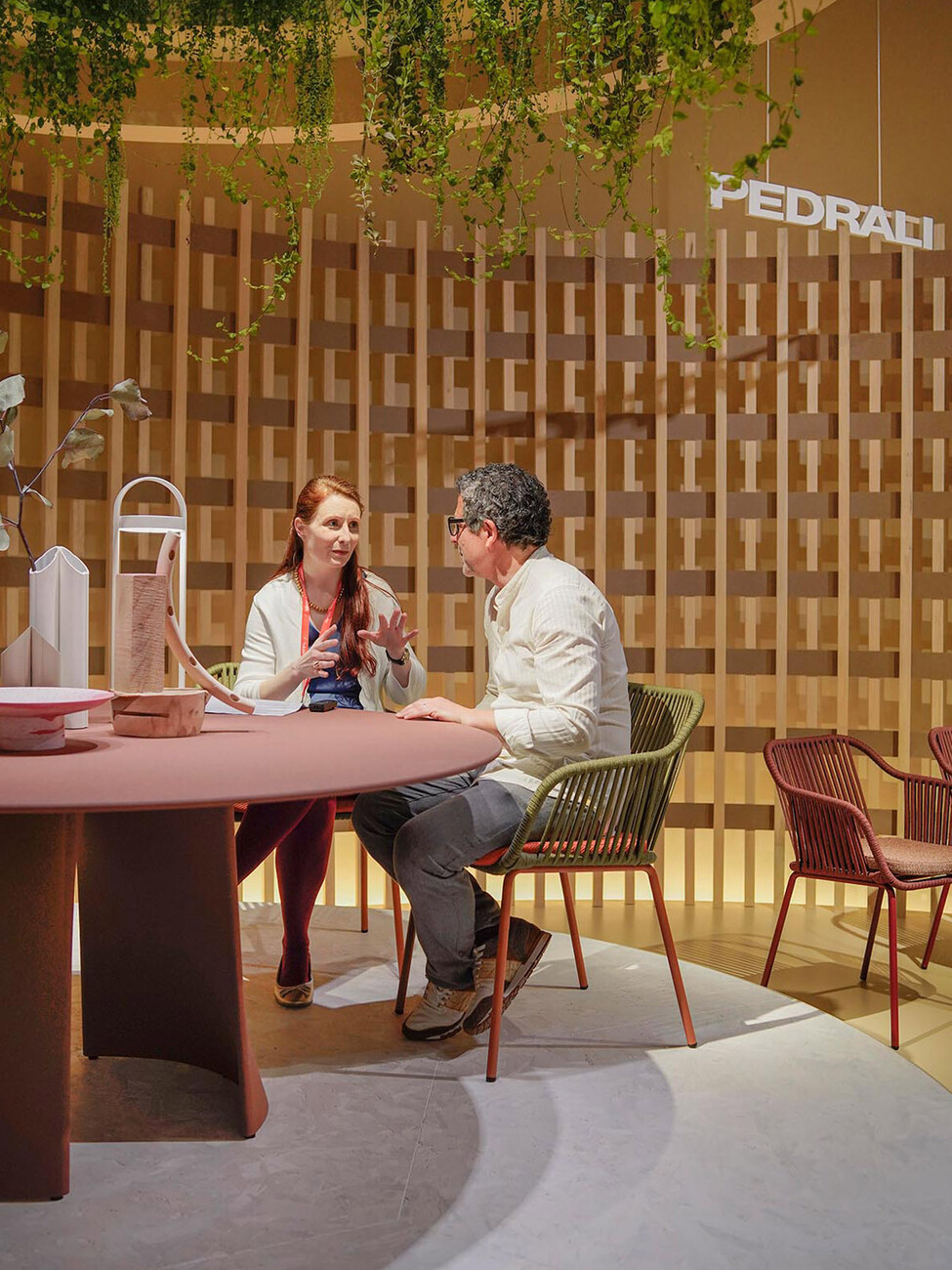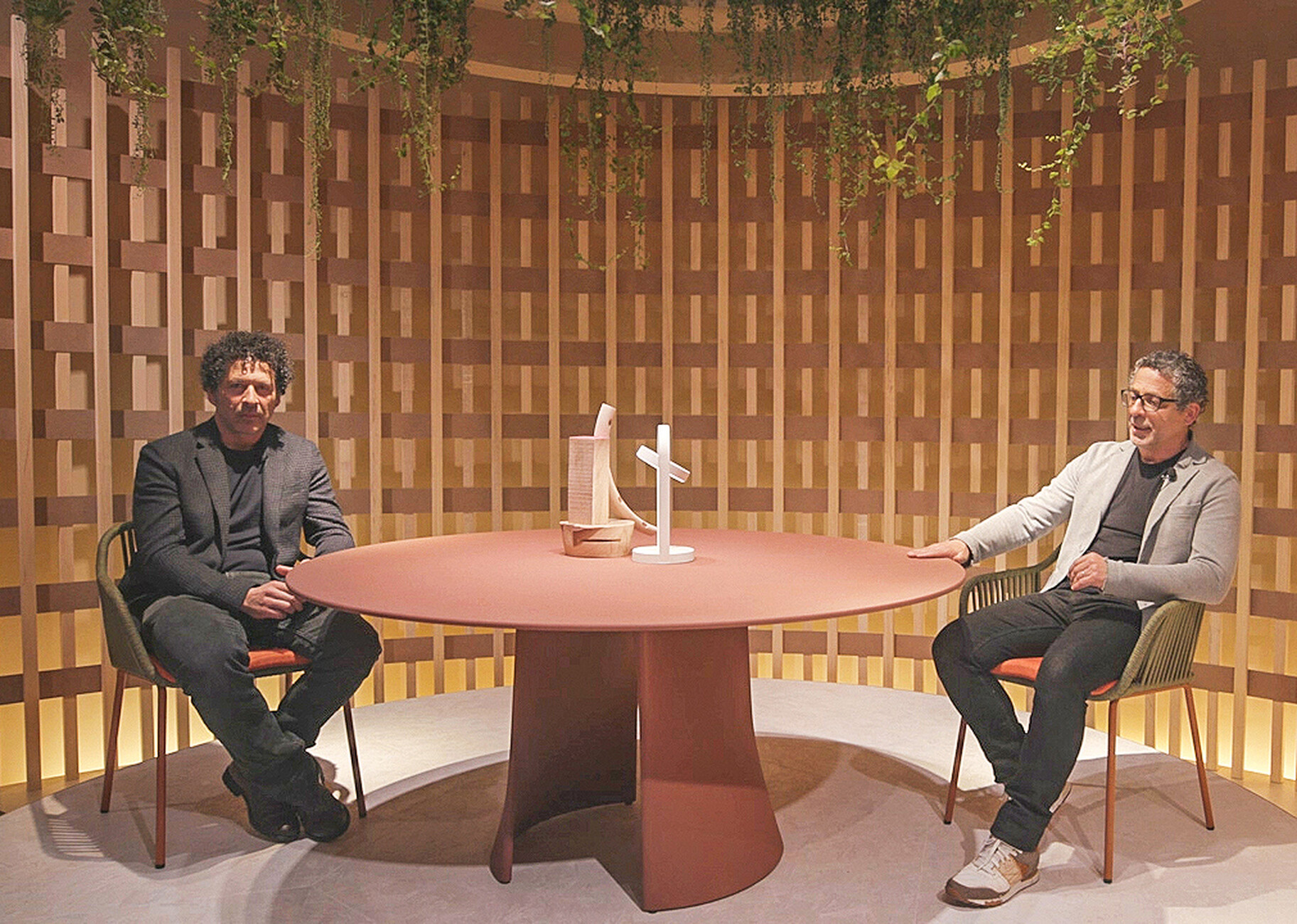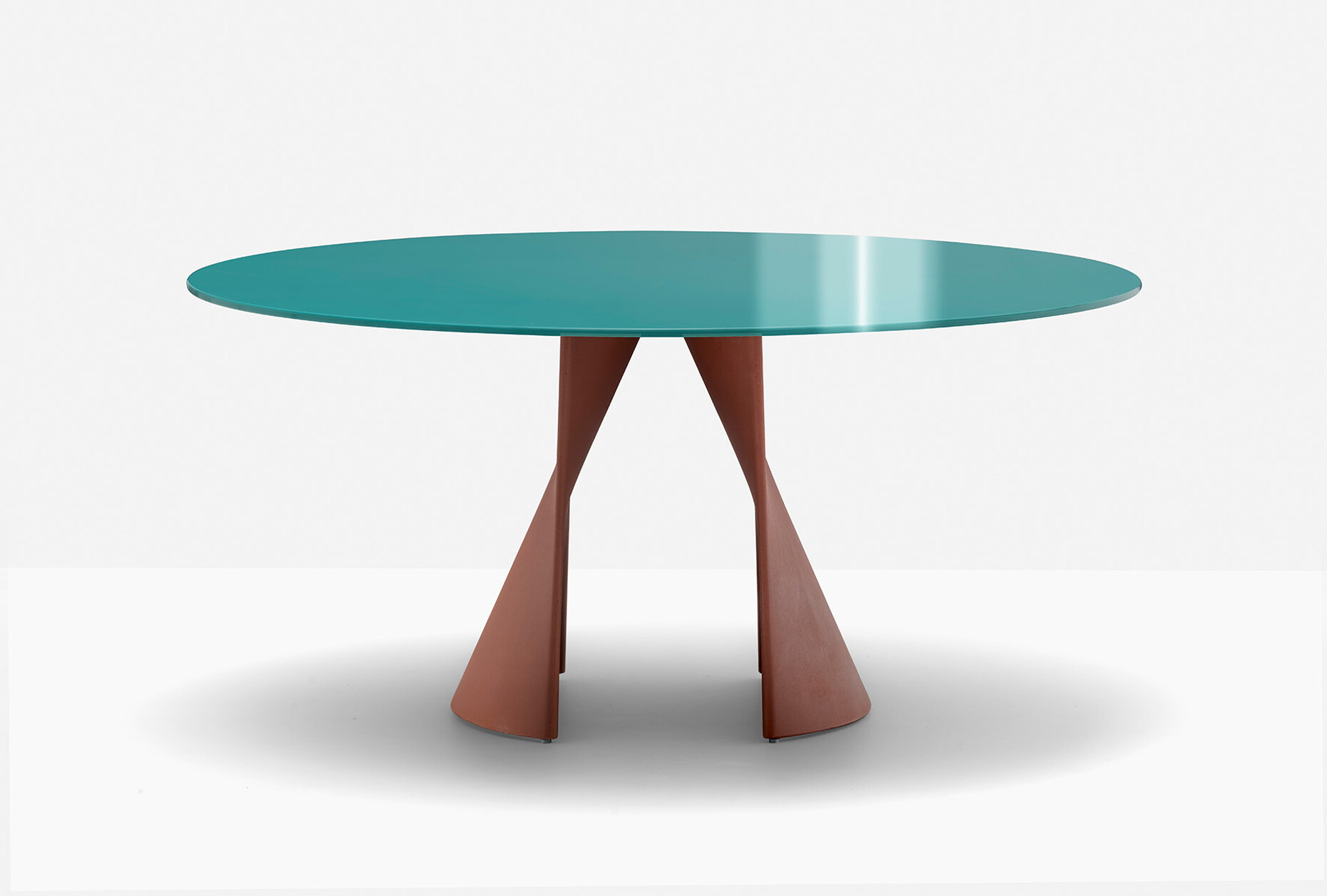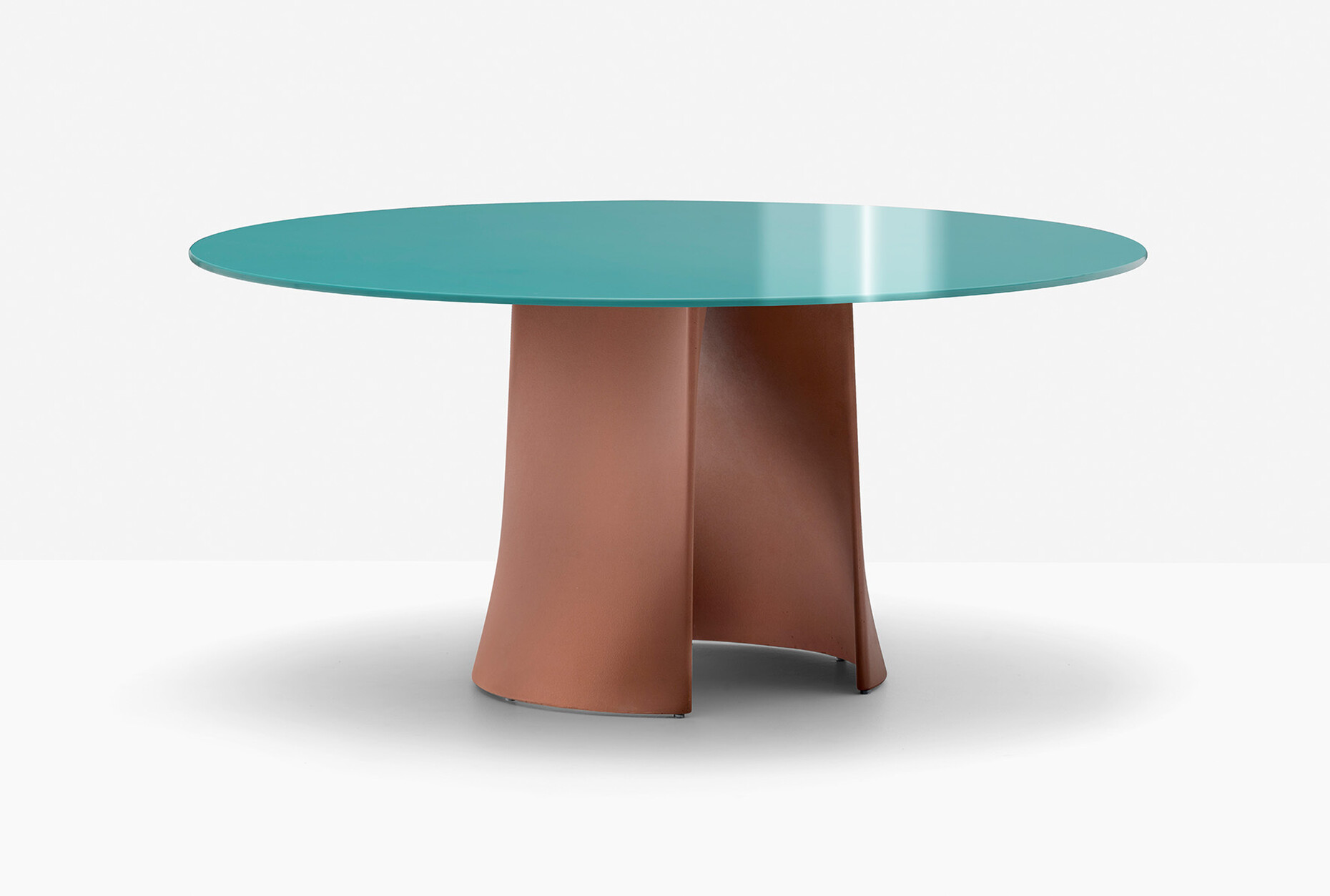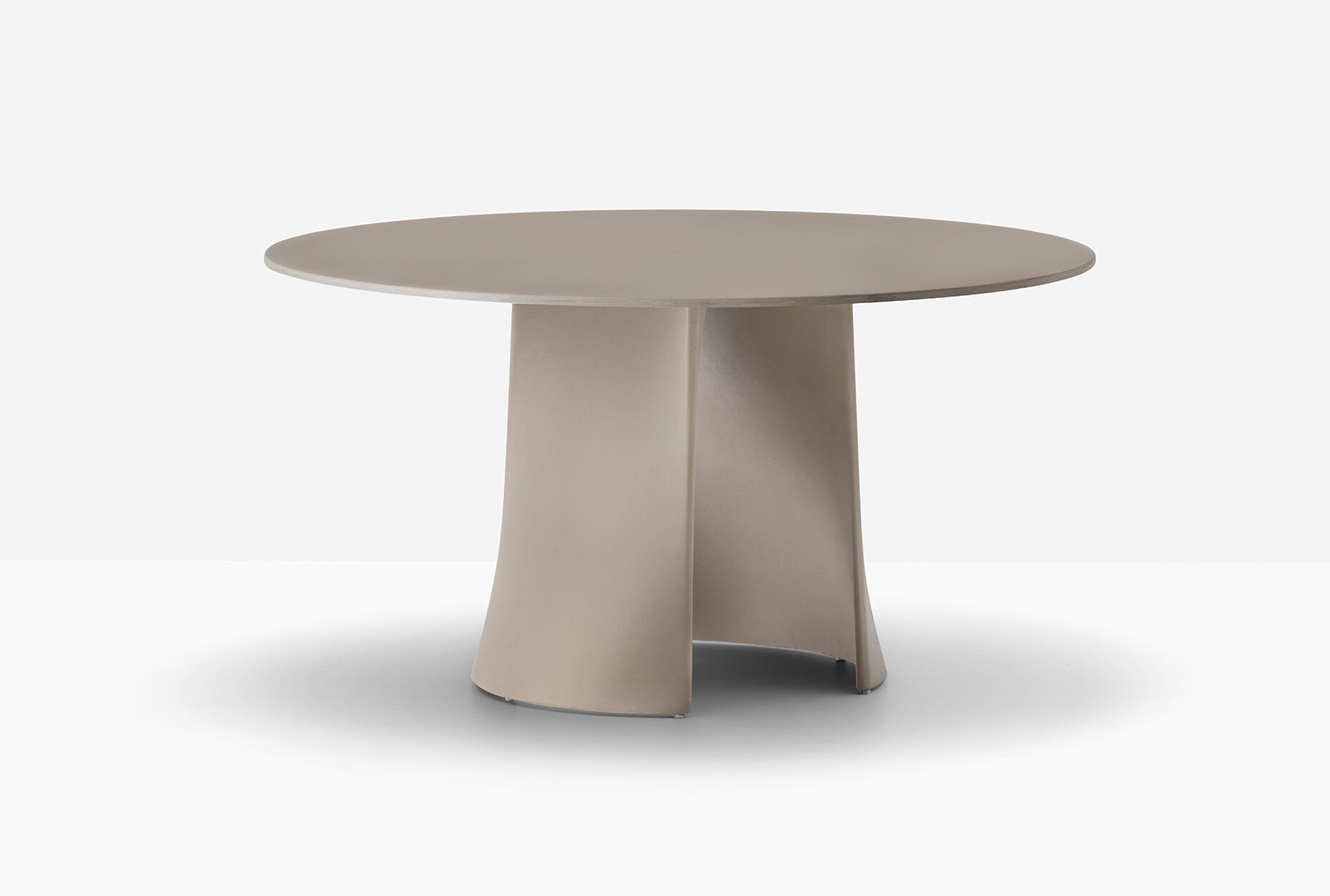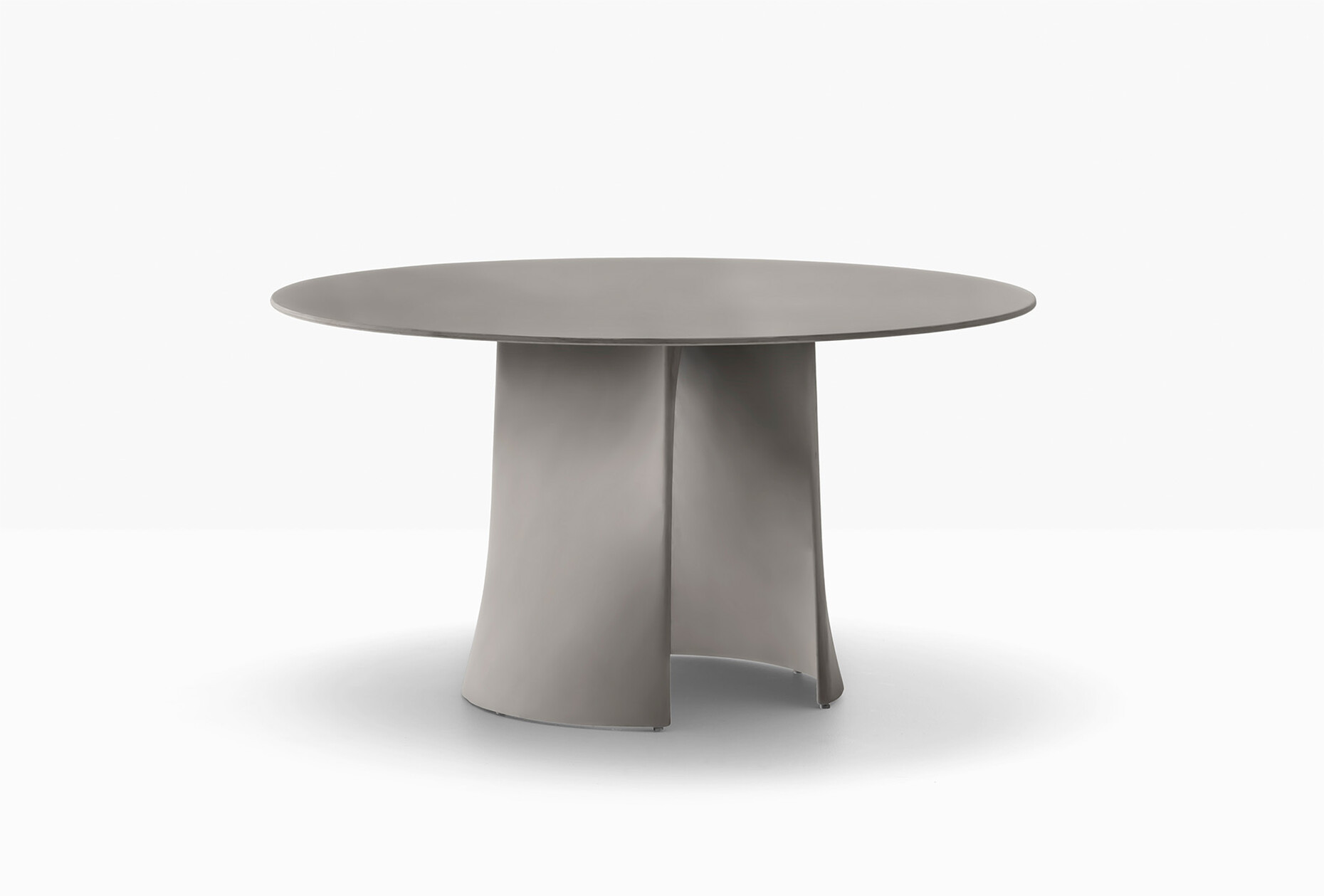Featured
Gentle strength
Anna Moldenhauer: Tito, how did the collaboration with Pedrali come about?
Tito Toso: For us, it is a great honor to work with Pedrali because the company operates democratically. In our view, the dream of working as an industrial designer is to design something that is not only for a small, wealthy part of the population. Working with Pedrali, we had the opportunity to develop the product in such a way that we could get the best out of the idea. Pedrali has a lot of courage, they accept challenges in design, and that is a great pleasure for us because it is not a matter of course. Moreover, the interpersonal relationship between Pedrali's development team and us is very heartfelt.
To what extent was the material of concrete an inspiration for "Anemos"?
Tito Toso: Concrete is a material with a very long history, which has accompanied humans for centuries. The starting point of its production is fluid, as it consists of a mixture of water, sand, and stones, and we have kept this dynamic of fluid origin for the shape of the table. The gentle rotation in the base has the effect of a natural movement, reminiscent of sails, waves, and wind.
The table is solid, but still intended for universal use – how did you solve this contrast?
Tito Toso: In the design, we were inspired by the great works of the Italian civil engineer and architect Pier Luigi Nervi, who did not think of reinforced concrete in classic architectural terms, but more as a membrane, as a surface. This approach is very interesting for us because it opens up the possibility of giving the material an unexpected softness, as you can now feel when touching the tabletop of "Anemos". It is crucial for us to create a relationship between the user, the environment, and the product. We don't want to pursue a style through our work, but to create a new connection, a new kind of function. The materiality is at the center for us, and through this we want to convey a poetry.
"Anemos" consists of two concrete shells that are attached to the tabletop; the thickness of the concrete is minimal. Minimalist forms are more difficult to realize, in my opinion, because nothing can be hidden. The design has to be on point. How did you achieve these shapes?
Tito Toso: That was a challenge for us. We wanted to create a contrast between the solid material and its strength. To find a minimal strength that nevertheless gives the table the necessary stability, we created many prototypes, balancing the forces. In addition, we wanted to achieve a form that is familiar on the one hand, and on the other hand has a new level that has not been seen before. Finding the familiar in the new is a power of design. It has to harmonize with the surroundings. "Anemos" thus brings influences from architecture into its form.
You work together with your brother Pio. How do your different personalities show in the design?
Tito Toso: For me, relationships are always about recognizing the deeper value of a person, their approach and sensitivity, and it's the same with my brother and me. We have a different way of feeling life, and ideas can come out of that, as shown by the contrasts in "Anemos" for Pedrali.
You have both studied architecture. How did this training influence your view of design?
Tito Toso: You think about aspects that you wouldn't immediately consider as a designer, so I see it as a form of enrichment.
In architecture, concrete is a material that people are currently trying to avoid; there is a lot of research into possible alternatives. In design, on the other hand, the limits of the material are being explored with new forms, like in your work. Why is that, in your opinion?
Tito Toso: I think we have a different approach to the use of concrete in interiors, because in this use it is very durable and can be adapted very flexibly.
I read a quote from you on the Pedrali website, which says: "A table needs to be functional without imposing on the surrounding environment. On the contrary, it needs to allow the architecture of its context to emerge." "Anemos" is very sculptural, but at the same time it does not impose itself on the space. How do you achieve this balance?
Tito Toso: Our way is to reduce the element to its essence. We see ourselves as a service provider, here to improve the everyday life of the people who use our furniture and products. The design must be universally accessible and usable.
